Discover 20 hidden attractions, cool sights, and unusual things to do in Williamsburg (United States). Don't miss out on these must-see attractions: DeWitt Wallace Decorative Arts Museum, Governor's Palace, and Bruton Parish Church. Also, be sure to include St. George Tucker House in your itinerary.
Below, you can find the list of the most amazing places you should visit in Williamsburg (Virginia).
Table of Contents
DeWitt Wallace Decorative Arts Museum
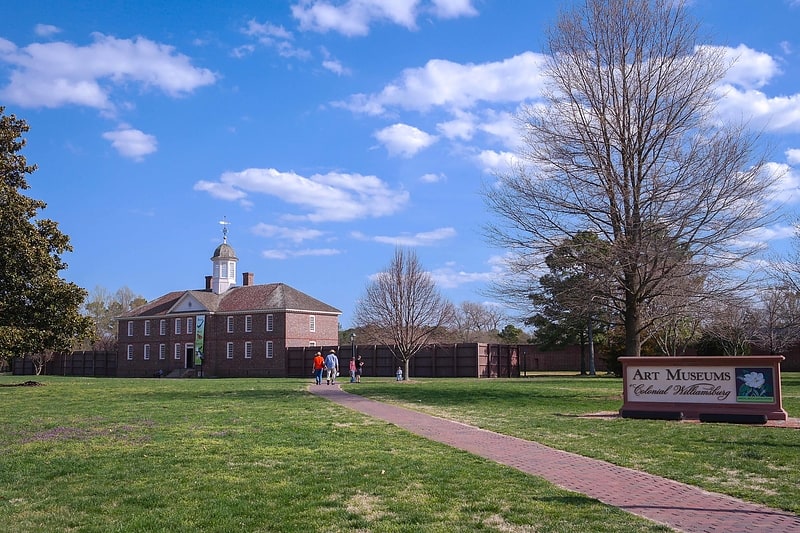
Museum in Williamsburg, Virginia. The DeWitt Wallace Decorative Arts Museum, is a museum dedicated to British and American fine and decorative arts from 1670-1840, located in Williamsburg, Virginia.
Situated just outside the historic boundary of Colonial Williamsburg, DWDAM was founded with an initial 1982 donation by DeWitt Wallace and his wife Lila Bell Acheson Wallace — co-founders of Reader's Digest.
The Wallaces donated $12 million to finance reconstruction of the nation's first public mental hospital, the Public Hospital of 1773 and construction of the decorative arts museum — to be connected to the hospital by an underground concourse. Having initially opened in 1985, the museum has since expanded to include the Abby Aldrich Rockefeller Folk Art Museum and will undergo another expansion to open in 2019 with a new, street-level entrance.
The museum features diverse collections related to the founding of the United States — including furniture, paintings, silver, numismatics, ceramics, tools, textiles, glass, maps, weapons, media and other objects from the permanent Colonial Williamsburg collection.[1]
Address: 325 Francis St E, 23185 Williamsburg
Governor's Palace

Pre-Revolution British royal residence. The Governor's Palace in Williamsburg, Virginia, was the official residence of the royal governors of the Colony of Virginia. It was also a home for two of Virginia's post-colonial governors, Patrick Henry and Thomas Jefferson, until the capital was moved to Richmond in 1780, and with it the governor's residence. The main house burned down in 1781, though the outbuildings survived for some time after.
The Governor's Palace was reconstructed in the 1930s on its original site. It is one of the two largest buildings at Colonial Williamsburg, the other being the Capitol.[2]
Address: 300 Palace Green St, 23185 Williamsburg
Bruton Parish Church
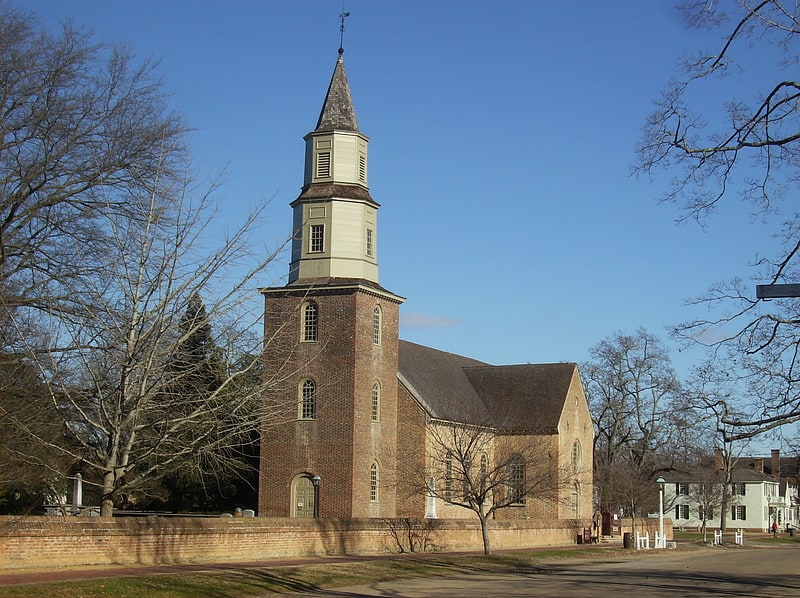
Building in Williamsburg, Virginia. Bruton Parish Church is located in the restored area of Colonial Williamsburg in Williamsburg, Virginia, United States. It was established in 1674 by the consolidation of two previous parishes in the Virginia Colony, and remains an active Episcopal parish. The building, constructed 1711–15, was designated a National Historic Landmark in 1970 as a well-preserved early example of colonial religious architecture.[3]
Address: 331 W Duke of Gloucester St, 23185-4101 Williamsburg
St. George Tucker House
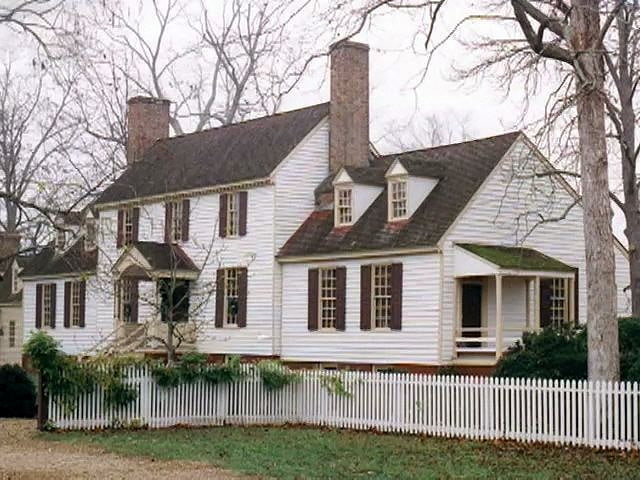
Historical landmark in Williamsburg, Virginia. The St. George Tucker House is one of the original colonial homes in Historic Williamsburg. It was built in 1718–19 for William Levingston. The house eventually came into the hands of St. George Tucker who had moved from Bermuda to Williamsburg. Tucker was a lawyer and professor of law at the College of William and Mary and later became a state and federal judge. In 1796, Judge Tucker wrote a controversial pamphlet addressed to the General Assembly of Virginia. In it he laid out a plan to end slavery in Virginia because "the abolition of slavery was of great importance for the moral character of the citizens of Virginia." He is also famous for his 1803 edition of "Blackstone's Commentaries" which has become an indispensable American law text.
The St. George Tucker House began as a simple structure but over the years, Tucker made many additions to the house to accommodate his growing family. Among these were chimneys, a second story, an east and west wing, a kitchen and bathrooms. St. George's son, Nathaniel Tucker continued the tradition and implemented many changes of his own. The family kept extensive records making the St. George Tucker House the most well documented home in Williamsburg.
Of the many stories and anecdotes tied to the house, one of the most enduring is that of the first Christmas tree in Williamsburg. A German professor, Professor Charles Minnigerode, a friend of St. George's son, was a frequent guest in the home. In 1842, he introduced the Tucker children to a German style holiday celebration. Following the German tradition, a small evergreen tree was brought into the house. To the delight of the children they proceeded to decorate the tree with gilded nuts, marbleized paper, and strings of popcorn. The following December most families in Williamsburg had a Christmas tree in their parlor. The tradition soon spread throughout Virginia. To this day during the holiday season the only Christmas tree in Colonial Williamsburg can be found in the St. George Tucker House to commemorate that first tree.
Tucker was somewhat of a disciplinarian as respected his children and other young residents, and being a judge, naturally drafted rules for the youngsters, called "Garrison Articles" to regulate behavior in the house. The children and visiting William and Mary students, somewhat-tongue-in cheek, then labeled the residence "Ft. St. George".
In 1930 the Coleman family, descendants of St. George, deeded the house to Colonial Williamsburg with a life tenancy agreement. It was not until 1993, after the death of Tucker's great, great granddaughter, Dr. Janet (Coleman) Kimbrogh, that the house was turned over to Colonial Williamsburg. The last private resident to the home was Mr. Erich Tucker Kimbrough while he was a student at the William & Mary Law School. Remarkably, "the Tucker House" (as the family calls it) remained a private residence in the midst of Colonial Williamsburg until the early 1990s.
Once in the hands of Colonial Williamsburg, mechanical and electrical systems were brought up to date including a bathroom constructed in compliance with the Americans with Disabilities Act. The necessary modernization notwithstanding, the classic 18th-century style of the house remains faithfully intact.
Today the St. George Tucker house is used as an elegant reception center for donors of Colonial Williamsburg.[4]
Peyton Randolph House
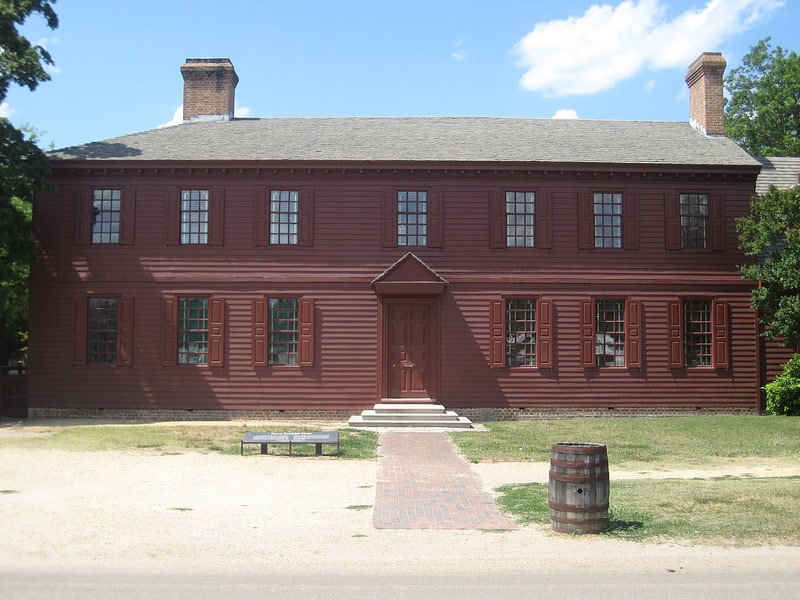
Museum in Williamsburg, Virginia. The Peyton Randolph House, also known as the Randolph-Peachy House, is a historic house museum in Colonial Williamsburg, Virginia. Its oldest portion dating to about 1715, it is one of the museum's oldest surviving buildings. It was designated a National Historic Landmark in 1973 as the home of Peyton Randolph, the first and third President of the Continental Congress.[5]
Capitol
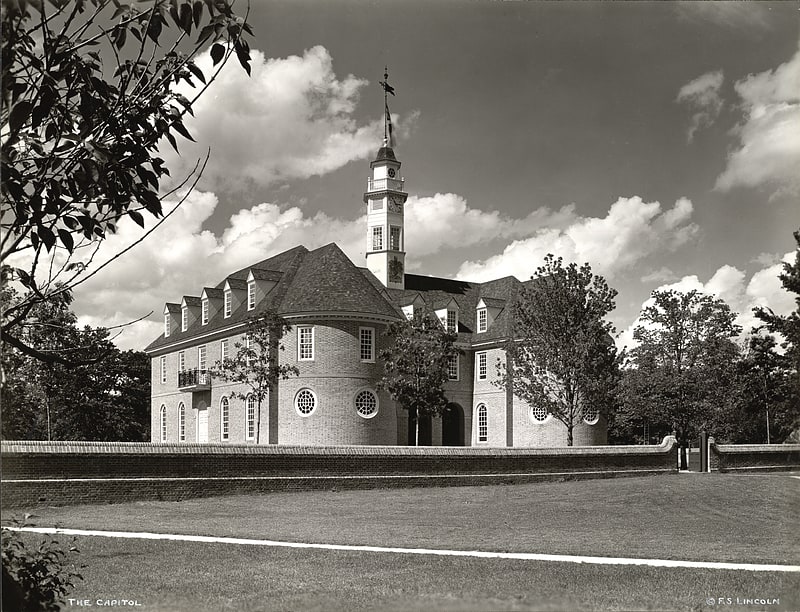
The Capitol at Williamsburg, Virginia housed both Houses of the Virginia General Assembly, the Council of State and the House of Burgesses of the Colony of Virginia from 1705, when the capital was relocated there from Jamestown, until 1780, when the capital was relocated to Richmond. Two capitol buildings served the colony on the same site: the first from 1705 until its destruction by fire in 1747; the second from 1753 to 1780.
The earlier capitol was reconstructed in the early 1930s as part of the restoration of Colonial Williamsburg. The reconstruction has thus lasted longer than the combined total of both original capitol buildings.[6]
Saint Bede Catholic Church
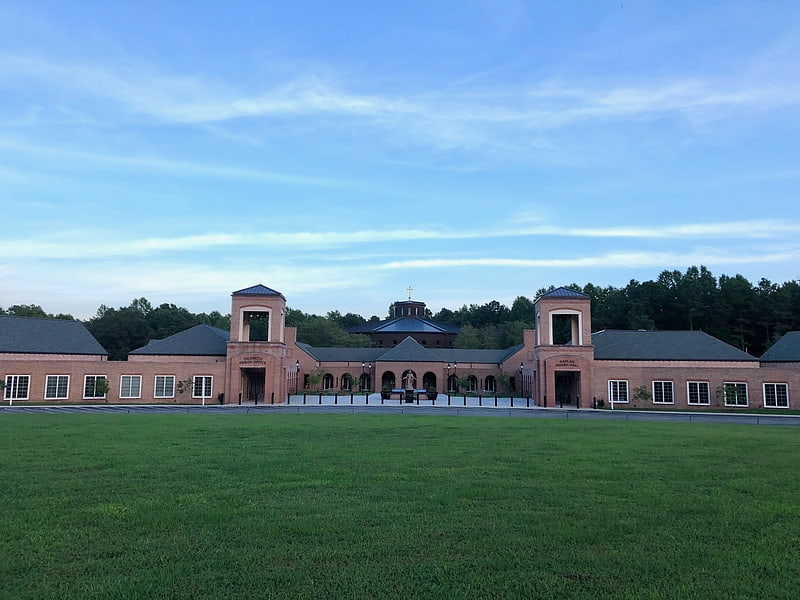
Catholic church in James City County, Virginia. Saint Bede Catholic Church in Williamsburg, Virginia is a Catholic parish in the Diocese of Richmond. The National Shrine of Our Lady of Walsingham, located adjacent to the campus of the College of William and Mary, is a part of the parish. It was the first Catholic church in Williamsburg.[7]
Grover's Alpine Express
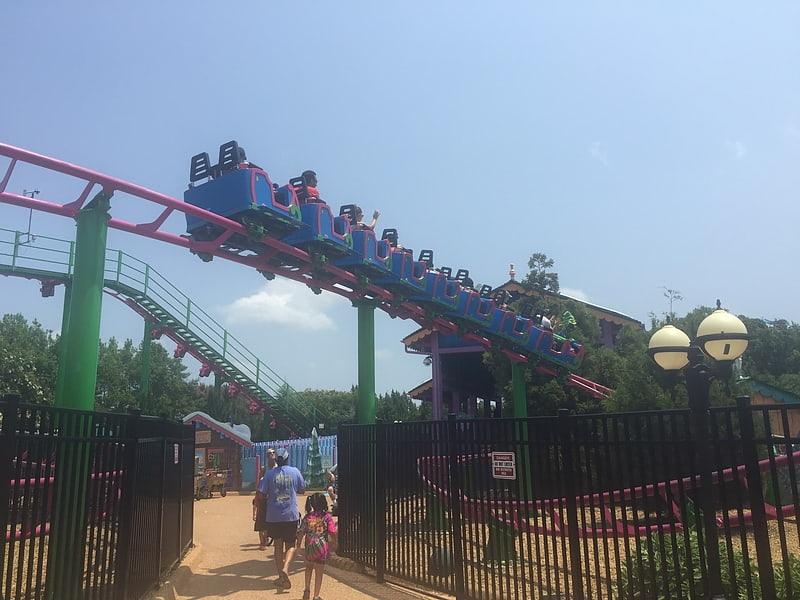
Roller coaster in James City County, Virginia. Grover's Alpine Express is a sleigh-themed Zierer junior roller coaster located at Busch Gardens Williamsburg, located in Williamsburg, Virginia.[8]
Address: 1 Busch Gardens Blvd, 23185 Williamsburg
Wythe House
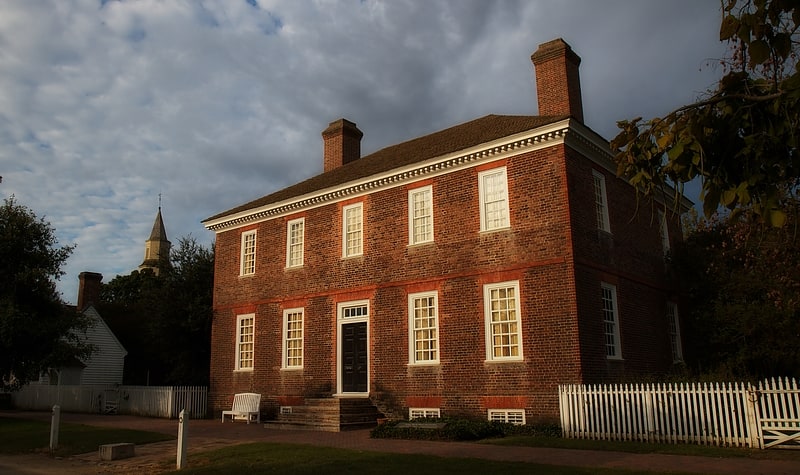
Historical landmark in Williamsburg, Virginia. The Wythe House is a historic house on the Palace Green in Colonial Williamsburg, in Williamsburg, Virginia, USA. Built in the 1750s, it was the home of George Wythe, signer of the Declaration of Independence and father of American jurisprudence. The property was declared a National Historic Landmark on April 15, 1970.[9]
Address: Palace Green Street, 23185 Williamsburg
Busch Gardens Williamsburg
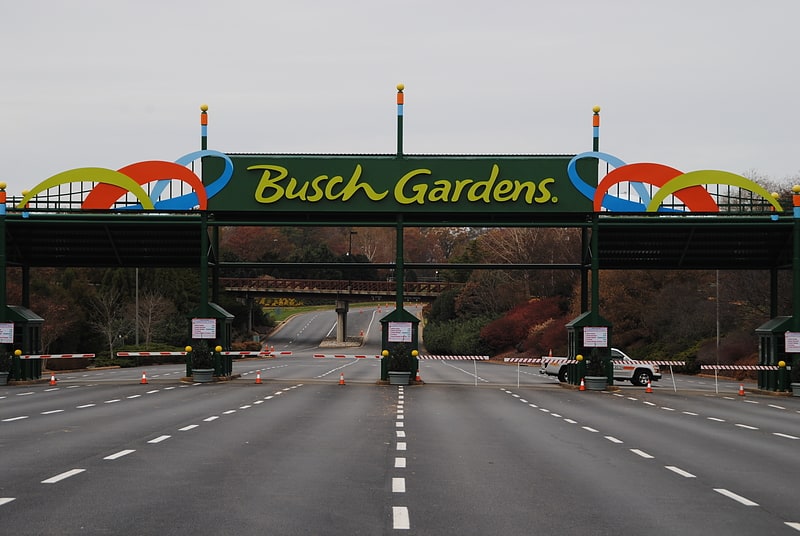
Euro-themed playland for shows and screams. Busch Gardens Williamsburg is a 422-acre amusement park located in James City County near Williamsburg, Virginia, United States. Located approximately 60 miles northwest of Virginia Beach, the park was developed by Anheuser-Busch and is owned by SeaWorld Parks & Entertainment. It opened on May 16, 1975, adjacent to Anheuser-Busch's brewery and near its other developments including the Kingsmill Resort complex.
The park is themed to a variety of European country themes and was originally named Busch Gardens: The Old Country. In 1993, the park was renamed Busch Gardens Williamsburg, and it was briefly named Busch Gardens Europe from 2006–2008. In 2015, an estimated 2.78 million guests attended the park, ranking it twentieth in overall attendance among amusement parks in North America. In addition to its landscaping and European themes, Busch Gardens is widely known for its roller coasters, including Griffon, Loch Ness Monster, Alpengeist, and Apollo's Chariot, the latter of which was ranked as the fourth best steel coaster in the annual Golden Ticket Awards publication from Amusement Today in 2012.[10]
Address: 1 Busch Gardens Boulevard, 23185-5664 Williamsburg
First Baptist Church
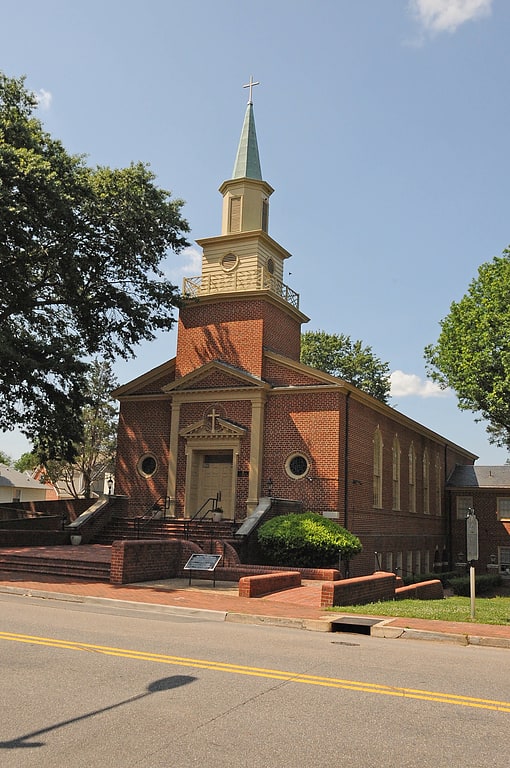
Baptist church in Williamsburg, Virginia. The First Baptist Church is a historic church at 727 Scotland Road in Williamsburg, Virginia. It is a brick Colonial Revival structure, built in 1956 to a design by Norfolk architect Bernard Spigel. It is of only two known church designs by Spigel. The congregation was founded in the 1770s as a non-denominational group of free and enslaved African-Americans, and became officially Baptist in 1781. Located for many years in a church on Nassau Street, it was relocated by the Colonial Williamsburg Foundation to its present location at the foundation's expense.
The building was listed on the National Register of Historic Places in 2017.[11]
Address: 727 Scotland St, 23185-3521 Williamsburg
Colonial Williamsburg
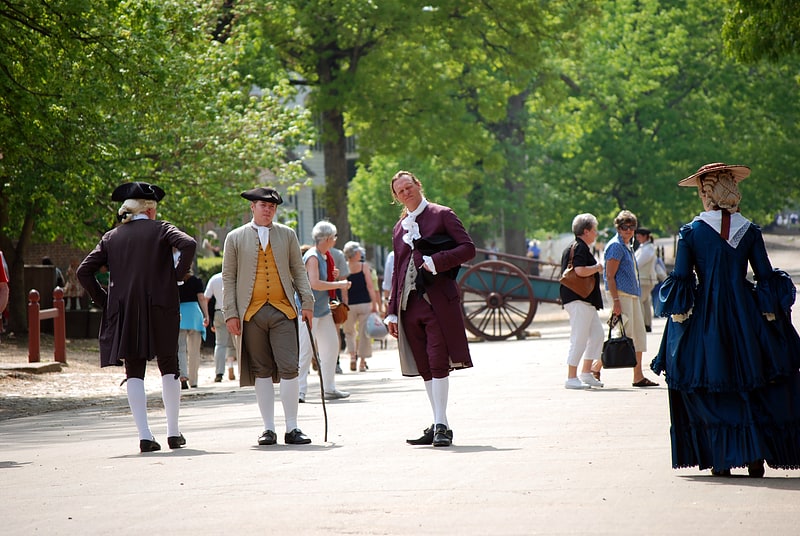
Museum in Williamsburg, Virginia. Colonial Williamsburg is a living-history museum and private foundation presenting a part of the historic district in the city of Williamsburg, Virginia, United States. The Colonial Williamsburg Foundation has 7300 employees at this location and globally. There are 37 companies in The Colonial Williamsburg Foundation corporate family.
Its 301-acre (122 ha) historic area includes several hundred restored or re-created buildings from the 18th century, when the city was the capital of Colonial Virginia; 17th-century, 19th-century, and Colonial Revival structures; and more recent reconstructions. An interpretation of a colonial American city, the historic area includes three main thoroughfares and their connecting side streets that attempt to suggest the atmosphere and the circumstances of 18th-century Americans. Costumed employees work and dress as people did in the era, sometimes using colonial grammar and diction (although not colonial accents).
In the late 1920s, the restoration and re-creation of colonial Williamsburg was championed as a way to celebrate rebel patriots and the early history of the United States. Proponents included the Reverend Dr. W. A. R. Goodwin and other community leaders; the Association for the Preservation of Virginia Antiquities (now called Preservation Virginia), the Colonial Dames, the Daughters of the Confederacy, the Chamber of Commerce, and other organizations; and the wealthy Rockefellers John D. Rockefeller Jr. and his wife, Abby Aldrich Rockefeller.
Colonial Williamsburg is part of the part-historic project, part-tourist attraction Historic Triangle of Virginia, along with Jamestown and Yorktown and the Colonial Parkway. The site was once used for conferences by world leaders and heads of state, including U.S. presidents. It was designated a National Historic Landmark District in 1960.
In June 2019, its sixth president, Mitchell Reiss, announced that he would resign effective October, ending a five-year tenure distinguished by staff turnover, downsizing, and outsourcing.[12]
Abby Aldrich Rockefeller Folk Art Museum

Museum in Williamsburg, Virginia. The Abby Aldrich Rockefeller Folk Art Museum is the United States' first and the world's oldest continually operated museum dedicated to the preservation, collection, and exhibition of American folk art.
Located just outside the historic boundary of Colonial Williamsburg, Virginia, AARFAM was founded with a collection donated by Abby Aldrich Rockefeller and an endowment from her widower, John D. Rockefeller Jr. heir to the Standard Oil fortune and co-founder of Colonial Williamsburg.
With her seminal collection, Abby Rockefeller "elevated a body of material that had long been dismissed as homespun craft to a nationally-recognized and highly-regarded form of American art." The original building opened in May 1957 and was expanded in 1992 before being moved and expanded again in 2007, each time to accommodate its growing collection. Abby Rockefeller's collection of 424 pieces became the basis of a collection that now includes more than 7,000 folk art pieces dating from the 1720s to the present. A further expansion at its current location is projected to open in 2019.
Having opened originally as the Abby Aldrich Rockefeller Folk Art Collection, the facility changed names in 1977 to the Abby Aldrich Rockefeller Folk Art Center and again in 2000 to Abby Aldrich Rockefeller Folk Art Museum. Now co-located with the DeWitt Wallace Decorative Arts Museum, both collections retain their respective names — and are together known as the Art Museums of Colonial Williamsburg.[13]
Address: 325 W Francis St, 23185-4103 Williamsburg
Muscarelle Museum of Art
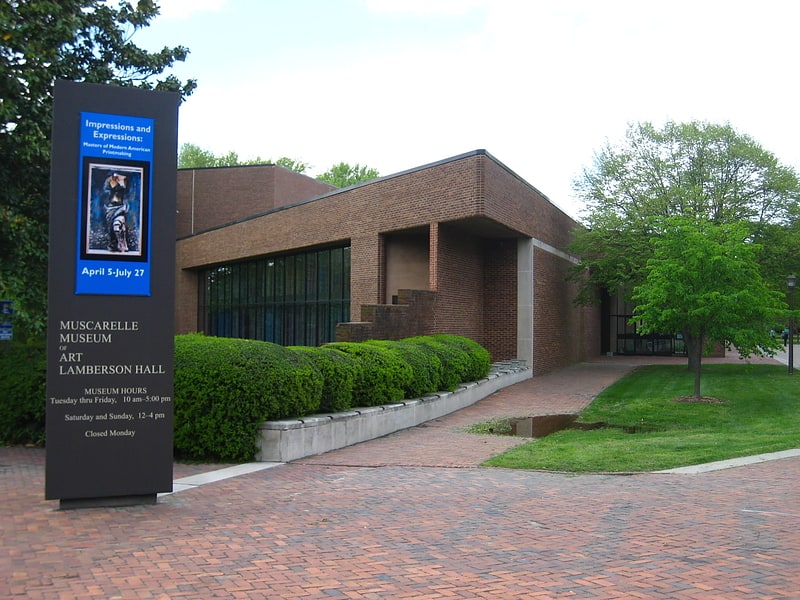
Museum in Williamsburg, Virginia. The Muscarelle Museum of Art is a university museum affiliated with the College of William & Mary in Williamsburg, Virginia. While the Museum only dates to 1983, the university art collection has been in existence since its first gift – a portrait of the physicist Robert Boyle – in 1732. Most early gifts to William & Mary relate to its history or the history of the Commonwealth of Virginia. Gifts of portraiture were the foundation of the early collection and include many First Families of Virginia including sitters from the Page, Bolling and Randolph families.[14]
Address: Jamestown Road, next to Phi Beta Kappa Hall, 23187 Williamsburg
Kimball Theatre
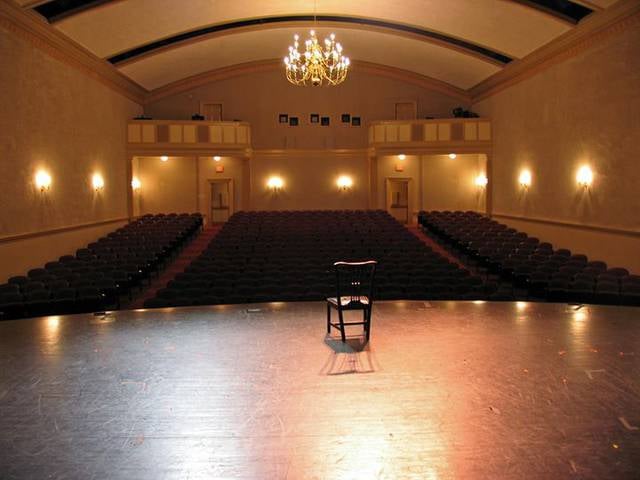
Concerts and shows, Cinema, Performing arts, Theater
Address: 428 W Duke of Gloucester St, 23185 Williamsburg
Earl Gregg Swem Library
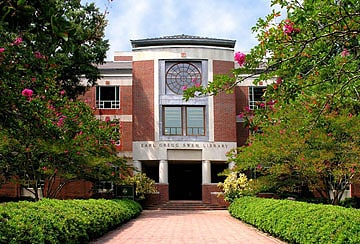
University library in Williamsburg, Virginia. The Earl Gregg Swem Library is located on Landrum Drive at the College of William and Mary in Williamsburg, Virginia. The library is named for Earl Gregg Swem, College Librarian from 1920-1944. In 2008, the Princeton Review rated William & Mary's library system as the eighth best in the United States. The ranking was based on a survey of 120,000 students from 368 campuses nationwide.[15]
Address: 400 Landrum Drive, 23185 Williamsburg
Wren Building
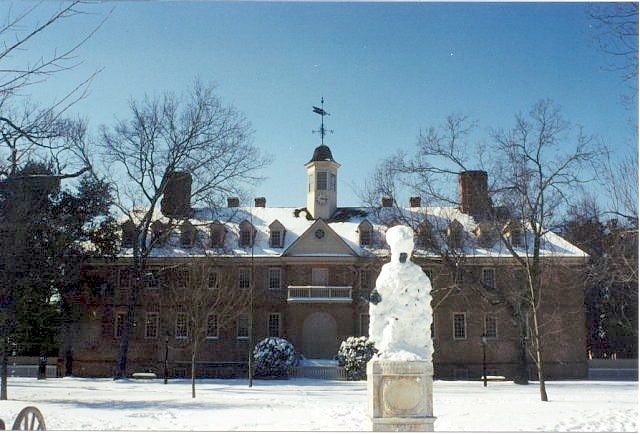
Building in Williamsburg, Virginia. The Wren Building is the signature building of the College of William & Mary in Williamsburg, Virginia. Along with the Brafferton and President's House, these buildings form the College's Ancient Campus. With a construction history dating to 1695, it is the oldest academic building in continuous use in the United States. It was designated a National Historic Landmark in 1960.
Construction of the first building on this site began August 8, 1695 and was completed by 1700. The building, along with the rest of the historic courtyard, was built using enslaved labor. After several fires and rebuildings, the Wren Building was the first major building restored or reconstructed by John D. Rockefeller, Jr. after he and the Reverend Dr. W.A.R. Goodwin began Colonial Williamsburg's restoration in the late 1920s. The building's current state dates to the 20th-century restoration by Boston architects Perry Shaw & Hepburn. The College named the building in honor of the English architect Sir Christopher Wren, after the Reverend Hugh Jones, a William and Mary mathematics professor, wrote in 1724 that the College Building was "modeled by Sir Christopher Wren". However, it is unknown how Jones came to this conclusion, since there are no actual documents tying Sir Christopher Wren to the design of the building; he never even visited North America. Perry Shaw and Hepburn's restoration reflects the building's historic appearance from its reconstruction in 1716 after a 1705 fire to 1859, when it burned again.
The building is constructed out of red brick in the style of Flemish and English Bond, as was typical for official buildings in 17th- and 18th-century Williamsburg, including several walls remaining from previous structures, and it contains classrooms, offices, a refectory (known as the Great Hall), kitchen, and a chapel (added as a south wing in 1732). The crypt beneath the chapel is the resting place of several notable Virginians, including royal governor Norborne Berkeley, 4th Baron Botetourt, Speaker of the House of Burgesses Sir John Randolph, and his son Peyton Randolph, the first President of the Continental Congress.
On the top of the building is a weather vane with the number 1693, the year the College was founded. In the early 1770s, plans were drawn up to complete the building as a quadrangle. Alumnus Thomas Jefferson (class of 1762) drew up a floorplan submitted to Governor Dunmore and foundations were laid in 1774. The looming War of Independence halted further construction, however, and the fourth wing was never completed. The foundations, however, still exist and were uncovered during excavations in 2014.
The first and second floors of the building are still open for public viewing. Guided tours of the Wren Building are offered whenever classes are in-session by the Spotswood Society, named after the influential Virginia governor, Alexander Spotswood. The Spotswood Society also maintains a virtual tour. In 2021, the Office of Historic Campus was disbanded.[16]
Virginia Musical Museum
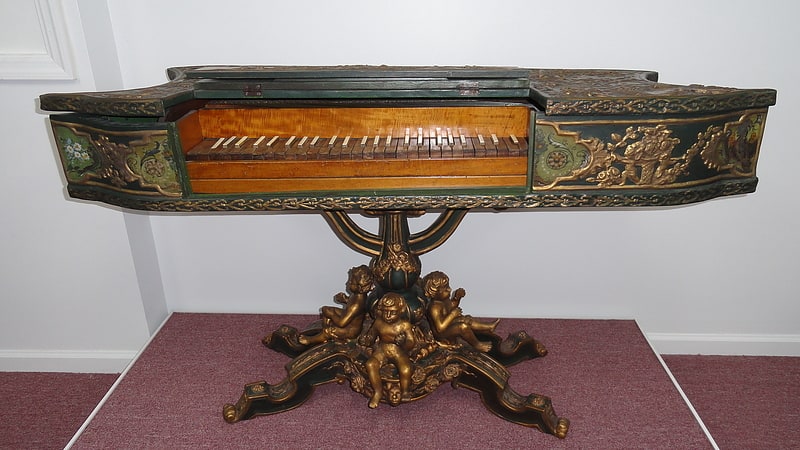
The Virginia Musical Museum is a museum located in Williamsburg, Virginia, United States. A collection of over forty years is combined with donations from famous Virginia music artists. Making up the museum are rare, antique musical instruments, mechanical music machines, phonographs and many personal items from Virginia artists. The museum opened its doors to the public on June 22, 2013.[17]
Address: 6316 Richmond Rd, 23188-1734 Williamsburg
Williamsburg Memorial Park
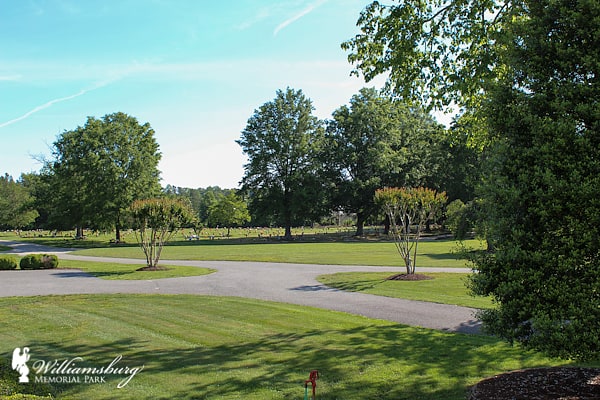
Cemetery in James City County, Virginia. Williamsburg Memorial Park is a 41-acre, non-profit, multi-denominational cemetery located at 130 King William Drive in Williamsburg, Virginia, United States. It was established in 1962 and built on the historic plantation of Benjamin Stoddert Ewell.[18]
Williamsburg Art Gallery
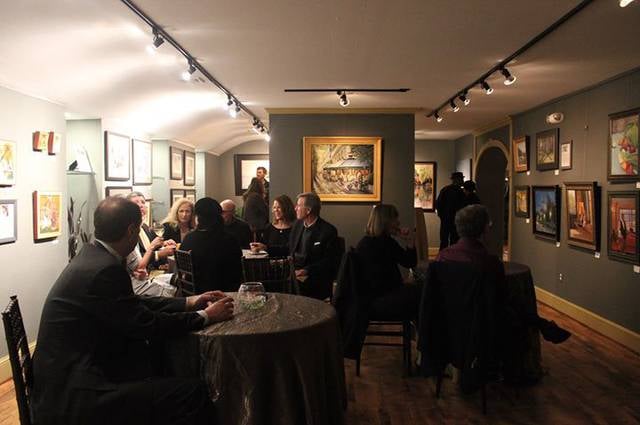
Museum, Art gallery, Shopping
Address: 440A W Duke of Gloucester St, 23185-3603 Williamsburg